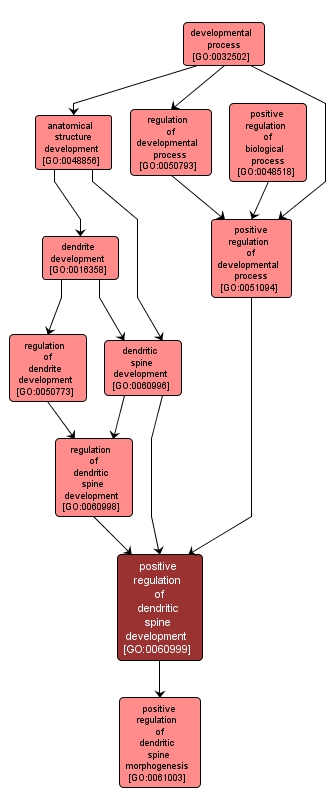GO TERM SUMMARY
|
| Name: |
positive regulation of dendritic spine development |
| Acc: |
GO:0060999 |
| Aspect: |
Biological Process |
| Desc: |
Any process that increases the rate, frequency, or extent of dendritic spine development, the process whose specific outcome is the progression of the dendritic spine over time, from its formation to the mature structure. |
|

|
INTERACTIVE GO GRAPH
|














